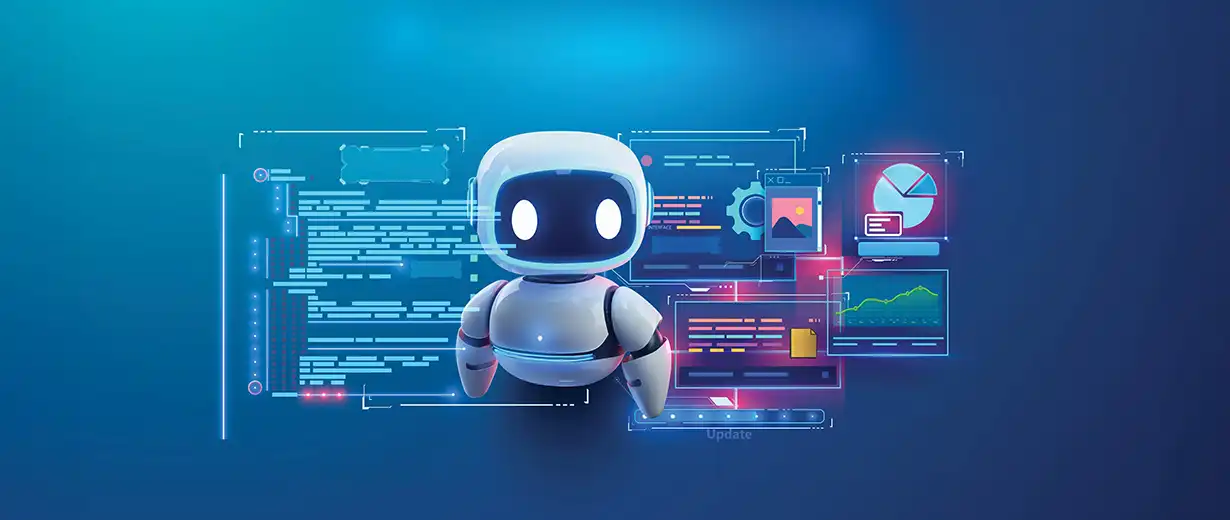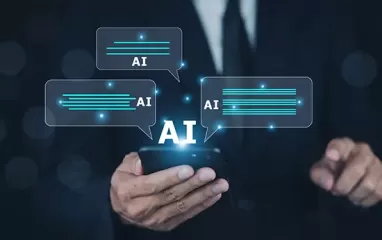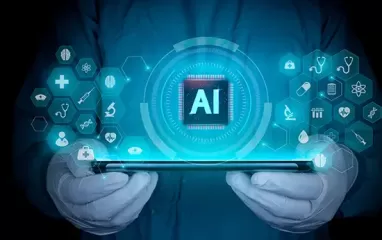Other recent blogs



Let's talk
Reach out, we'd love to hear from you!
AI agents are autonomous programs developed to make decisions and take actions based on that information. Their complexity ranges from simple rule-based to advanced models capable of learning and evolving over time. Businesses should aim for a clear understanding of different types of agent in AI to choose the appropriate solutions for the ongoing challenges.
Overview of AI Agent Structures
An AI agent is built on two fundamental layers : software architecture which defines the agent is organized and the agent program, which contains the algorithm that makes the decision-making possible.
Unlike traditional AI assistants, which depend on rule-based scripts, AI agents provide a high level of autonomy and adaptability.
AI agents usually include several modules that work together:
- Profiling module: It gathers data from the environment.
- Memory module: It retains knowledge and past experiences.
- Planning module : It selects actions to meet objectives.
- Action module: It carries out the chosen actions within the environment.
Type of AI Agents
AI agents can be classified based on complexity, intelligence, learning ability, and autonomy. Below are the most common types of agent in AI and their implications.
Below are the most common types of AI agents:
1. Simple Reflex Agents
These agents take actions based on current perceptions only. They use a condition -action rule. They don’t consider past actions or future outcomes.
Business use case:
- Rule-based customer support bot
- Automated alerts in monitoring systems
- Basic chatbot workflow in HR or IT
Implication:
- Simple to implement, but limited in scope. Best suited for repetitive rule-based tasks.
2. Model-Based Reflex Agents
These agents maintain an internal state by storing a model. And then use this model to make decisions.
Business use-cases:
- Intelligent thermostats adjusting for historical usage
- Inventory management system that predicts shortfalls
Implication:
- Useful in environment where understanding of past and present states is essential.
- Adds some intelligence to automation systems.
3. Goal-Based Agents
These agents have specific goals to achieve and can take future actions to reach those goals.
Business use-case:
- Route optimization in logistics
- AI-driven CRM systems prioritize leads based on conversion possibility
Implication:
- Adds decision-making flexibility. Enables businesses to pursue outcomes rather than just react to inputs.
4. Utility-Based Agents
These agents go beyond goal achievement - they evaluate the best way to achieve a goal based on parameters like cost, efficiency, etc.
Business Use-case:
- Dynamic price changes
- AI-powered recommendation engines
Implication:
- These agents support optimization and personalization. They drive competitive advantage by tailoring actions for maximum benefits.
5. Agentic AI agents
This emerging category combines generative AI and autonomous agent design well. These systems showcase advanced Agentic AI capabilities handling end-to-end workflows and refining results using feedback. Agentic AI can handle end-to-end tasks, operate across applications, make context-aware decisions, and constantly refine using feedback.
Business use-cases:
- Agentic AI applications include workflow automation in ServiceNow or autonomous sales and marketing follow-up agents.
Implications:
- Agentic AI agents represent a shift from rule-based work to autonomous. Businesses using them unlock scalability, and ability to delegate complex tasks to machines.
6. Learning Agents:
These agents have a habit of learning from their environment over time. They include a learning element, a performance element, a critic, and a problem generator.
Business use-cases:
- Predictive maintenance in manufacturing
- AI assistants that adapt to user behavior
Implication:
- They offer long-term value and adaptability in changing business environments. Learning agents help unlock true power of digital transformation.
Business Implication of AI Agents
AI agents are becoming popular and are considered by companies for many tasks. By deploying the right types of agent in AI, businesses can:
- Increase operational efficiency: Automate repetitive and decision-heavy workflows.
- Improve customer satisfaction: It is used for real-time support.
- Enable decision-making: Agents can analyze, predict, and act faster than humans on most occasions.
AI Agents Challenges
To scale AI agents, organizations must ensure secure data access and enforce consistent governance.
This allows agents to comply with policies and establish trust. However, deploying reliable agents is itself a challenge. Here’s how:
- Accuracy: In high stake domains such as finance, there is very less room for making any error. AI agents must provide precise outcomes and avoid risky ones.
- Data Governance: Agents need to interact with structured and unstructured data. These data sources are often siloed making real time access a complex task.
- Trust: As the use of AI expands, maintaining compliance with security and data governance policies becomes difficult. Enterprises must ensure that agents operate transparently and handle sensitive information with care.
AI Agents in Action: Practical Applications
AI agents are no longer confined to labs. Today, AI agents in action can be seen across multiple industries:
1. Data Analysis and Business Intelligence
AI agents efficiently process large volumes of structured and unstructured data, generating insights faster than traditional analytics.
- Retail: Agents analyze buying patterns and seasonal demand to forecast sales and optimize inventory.
- Finance: They detect anomalies, flag fraudulent transactions in real time, and provide predictive insights for investment strategies.
- Healthcare: Agents scan patient data and medical records to support clinical decision-making and identify risk factors.
2. Customer Support and Experience
Autonomous agents deliver instant, 24/7 assistance across channels.
- AI chatbots handle FAQs, troubleshoot issues, and route complex cases to human agents.
- Virtual assistants personalize recommendations by learning from customer history and behavior.
- In telecom, agents resolve service outages by combining real-time diagnostics with proactive updates to users.
3. Operations and Supply Chain
AI agents streamline workflows, cut costs, and improve agility.
- Logistics agents dynamically adjust delivery routes based on traffic, fuel costs, and order priorities.
- Manufacturing plants use predictive maintenance agents to anticipate equipment failures and reduce downtime.
- Procurement agents monitor supplier performance and automatically flag risks or delays.
This broad spectrum of Agentic AI applications highlights how businesses can achieve agility and scalability while streamlining decision-making.
AI Agents vs AI Model
While often confused, the distinction between AI agents vs AI model is critical. An AI model is the trained algorithm that makes predictions or classifications. An AI agent, however, goes further—integrating the model into a system capable of perceiving, planning, and acting autonomously.
The Road Ahead
From predictive analytics to workflow automation, AI agents in action demonstrate how enterprises can redefine operations, elevate customer experiences, and unlock new levels of efficiency. As organizations adopt more advanced systems, Agentic AI will continue to drive the next wave of digital transformation.



